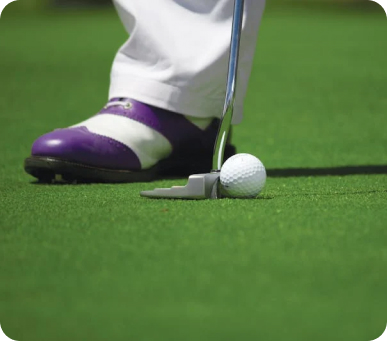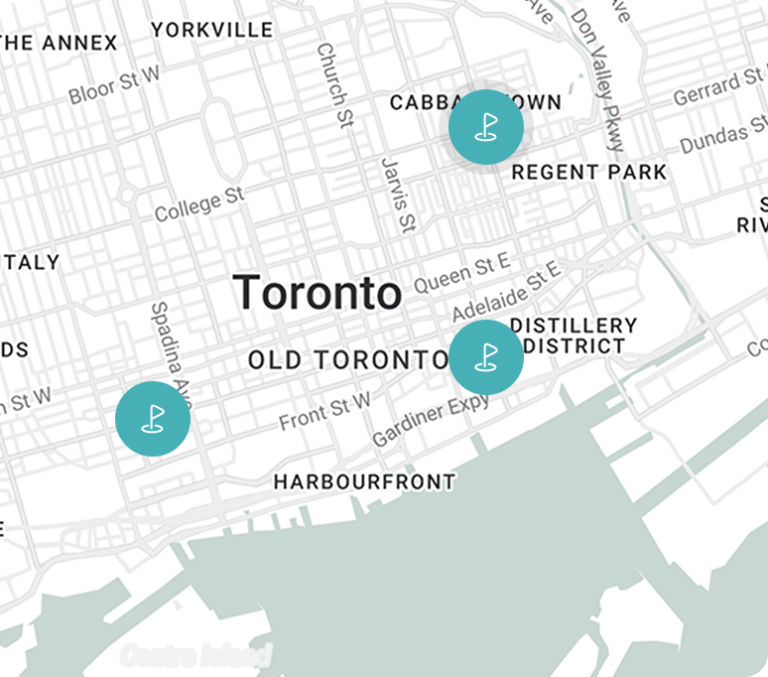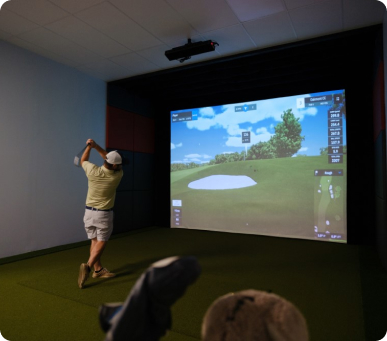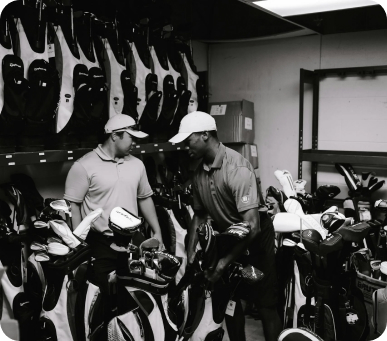Understanding The Ball Flight Laws
One of the first things all golfers should learn about the game before they even hit their first shot is the ball flight laws. When you understand why the ball goes where it does, the game becomes far less mysterious.
This article will explain the nine different ball flights and the causes behind each one to improve your game.
What are the ball flight laws?
The Ball Flight Laws represent the pinnacle of golf. The golf ball flight laws list the directions and angles that the ball travels after being struck by a club.
The ball flight laws define the relationship between the club’s face angle and swing path at impact, as well as the factors required to hit various ball flights. These laws provide golfers with insights about the height, trajectory, direction, curvature, and all the details needed for the ball to reach the target.
Simply put, the ball flight laws determine why you hit every shot the way you do.
Why do ball flight laws matter?
It can be quite discouraging if you waste time trying to fix one aspect only to find out that it was another entirely different reason.
Having a solid understanding of ball flight laws allows you to self-diagnose your own swings. If your balls consistently travel in the same direction, you can utilize the ball flight laws to pinpoint your flaws and regain control.
Most golfers cannot make informed adjustments if they are unable to identify the face angle and swing path of their club at impact.
Without the ball flight laws, you will have a harder time elevating your performance and improving your game.
Different types of ball flight
There are different types of ball flights depending on how the ball flies immediately after impact combined with how the ball curves.
For the initial flights right when the club hit the ball:
- Push: the ball goes to the right of the target line.
- Pull: the ball goes to the left of the target line.
- Straight: the ball goes directly in line with the target.
For the curvature direction:
- Fade: a ball that curves slightly right, falling to the right of the target. The opposite of a fade is a draw.
- Slice: a ball that takes a significant turn to the right. The opposite of a slice is a hook.
- Straight: a ball goes straight forward with no curve. It’s the ideal ball flight that will not veer sideways at all.
- Hook: a ball that takes a significant turn to the left. The opposite of a hook is a slice.
- Draw: a ball that turns slightly left, falling to the left side of the target. The opposite of a draw is a fade.
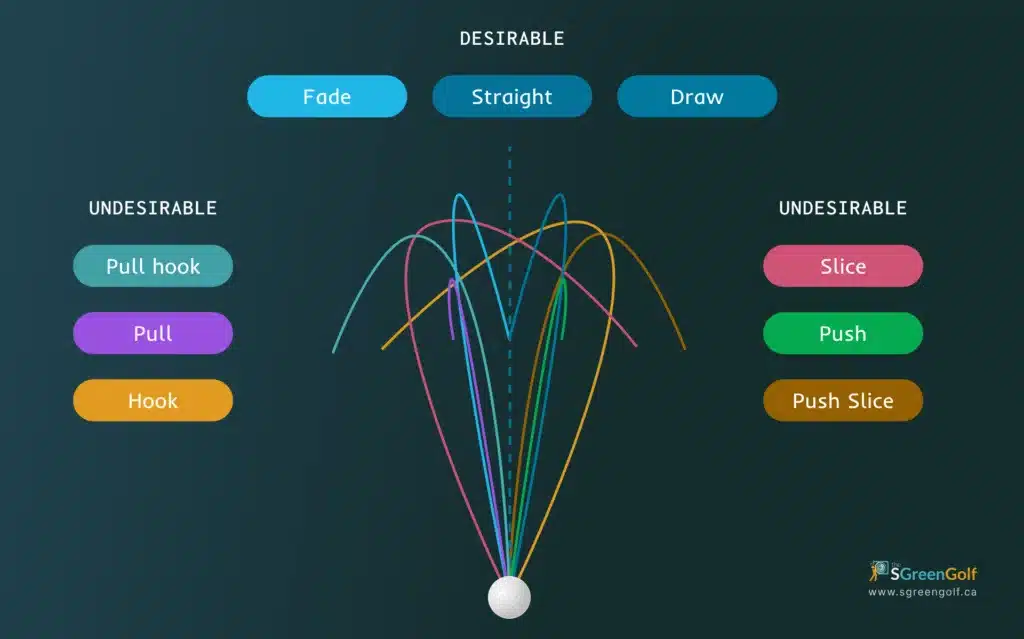
When combining the initial flights & curvatures, we have 9 possible ball flights:
- Push: The ball goes to the right of the target with no further curvature.
- Push Slice: The ball goes to the right and continues to turn further right of the target.
- Push Hook: The ball goes to the right and then turns back to the left with a larger curve.
- Straight: A straight shot comes off the face square.
- Straight Slice: The ball goes straight then takes a significant turn to the right.
- Straight Hook: The ball comes off the clubface straight and then hooks to the left.
- Pull: The shot starts left of the target and never curves.
- Pull Hook: The shot starts left of the target and then continues to turn further left.
- Pull Slice: The shot starts left of the target and then slices back to the right.
Factors that affect ball flights
All ball flights are the results of two swing parameters: clubface angle and swing path. It’s the combination of both these two parameters that determines how a ball flies through the air.
- Club face angle — Responsible for 75-95% of the initial shot direction, regardless of the swing path direction.
- Swing path — Responsible for shot curvature.
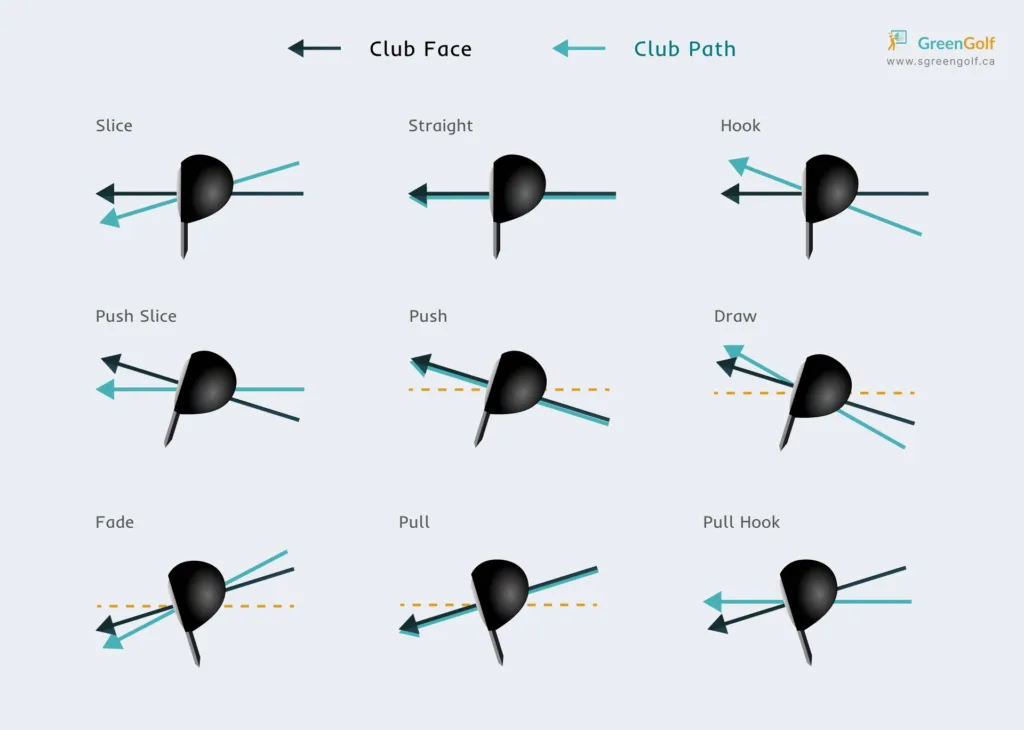
3 face angles (for right-handed golfers):
- Closed face angle: The club face is pointing to the left of the target, which makes the shot start left and curve more to the left (hook).
- Square face angle to target: The club face is aligned directly to the target making the shot fly relatively straight.
- Open face angle: The club face is pointing to the right of the target, which makes the shot start right of the target and curve more to the right (slice).
3 swing paths:
- In-to-out: The swing path direction is to the right of the target
- Square: The swing path direction is directly at the target
- Out-to-in: The swing path direction is to the left of the target
Final thoughts
Golf is not a simple sport, but knowing golf ball flight laws may make the process of getting better easier. The next time you’re practicing, pay attention to your clubface and your swing paths to get the ball precisely where you want it to go!
Practice controlling your swings at SGreenGolf for more improvements in your game.

